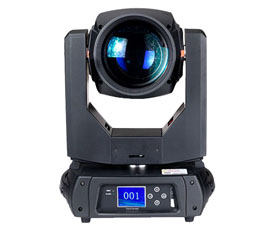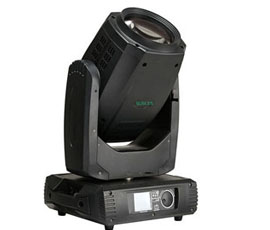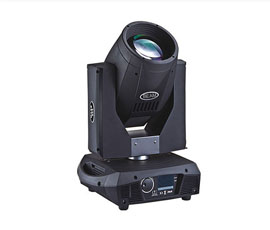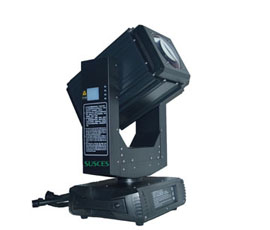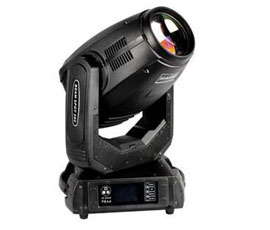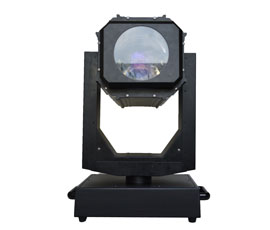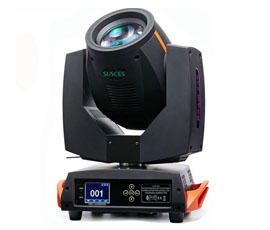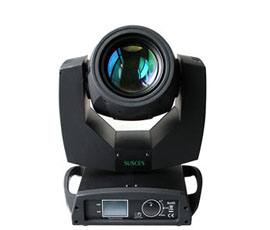
Audio recordings are evaluated on site
With the increasing demand and demands for spiritual and cultural life, more and more people enter the concert hall, opera house, theater and other halls and outdoor venues to enjoy live performances. And the performance of the scene sound effect of the degree of perfection, whether to meet the audiences auditory requirements? This requires the evaluation of live sound effects.
On-site sound effects are mainly affected by two factors: First, the architectural acoustics characteristics, for the hall, refers to the acoustic design of indoor acoustics, for open space, refers to the surrounding buildings for the performance of the acoustic characteristics of the venue; The characteristics of the electro-acoustic system equipped with the site, if pure sound performance, you can not consider this factor.
The evaluation method generally includes two aspects: objective evaluation and subjective evaluation. Objective evaluation refers to the use of objective acoustic measurement indicators to describe the sound quality effect; subjective sound quality evaluation refers to the subjective feelings of the sound of people to evaluate the sound quality. The final standard of evaluation is the human auditory feeling. Although the objective measurement index has a certain correspondence with the subjective listening feeling, the complexity of the human auditory system, coupled with the current research on auditory physiology and auditory psychology, is not deep enough. Relying on objective evaluation indicators can not fully reflect the subjective listening experience. Therefore, the evaluation of sound effects need to conduct both objective evaluation and subjective evaluation, and subjective evaluation as the final evaluation criteria for hall sound quality.
Subjective evaluation of the usual way is to ask a group of professional auditors to the concert hall, opera house, theater, outdoor stage and other needs of the evaluation of the scene, enjoy the live performances of the sound effects of this place to evaluate, the so-called on-site evaluation method The But require different regions of professional listeners at the same time, the same place to enjoy the same performance, need to spend a lot of time and effort, but also produce greater economic expenses. At the same time, this method of evaluation can not compare the sound effects at different locations in the audience area, since there is a subjective difference between the evaluation results of each listener, and the audiences at different locations are not comparable to the evaluation of the same performance ; If the same listener in different locations have heard, the result is not accurate, because even by the same actor to perform the same program, will have a difference, the subjective evaluation results have a certain impact. However, the acoustic head model based on the recording evaluation method can be a good solution to the above problems.
1 Binaural Technology and Acoustic Head Model
The sound pressure of the human ear contains the main sound space factors, including the positioning information of the sound source and the spatial information of the ambient reflection sound. The sound waves are transmitted to the listeners ears by means of direct and ambient reflection, and the head, torso, ear, etc. of the listener have diffraction and scattering effects on the incident sound waves. These effects can be transmitted from the sound source to the binaural HRTF ( Head RelatedTransfer Function). If you can listen to the ears of the tympanic membrane containing the HRTF contains the binaural signal, you can better restore the sound field, the speaker will greatly enhance the telepresence. The method of recording, synthesizing and reproducing in the binaural is collectively referred to as "BinauralTechnology". Binaural technology is the most direct application of the use of artificial head for binaural recording, so that the audience can not listen to the scene to live effects, or live records of the binaural signal stored to meet the needs of the latter part of the replay. But also through the HRTF and dry signal convolution of the synthesis of the binaural signal to dynamically simulate an auditory event, and even real life does not exist in the auditory events, thus creating an auditory virtual environment (Auditory Virtual Environment). Binaural technology is now widely used in various acoustic fields. According to GB / T 2428-1998 "Chinese adult head and face size of the national standard" designed to produce an acoustic head model [4] (see Figure 1), head size in line with the average Chinese physiological parameters , The head of the head and shoulder structure of a certain degree of simplification, only to retain the acoustic characteristics associated with the main part. The head mold is equipped with a standard artificial ear (see Figure 2). It is based on the analysis of the ear shape of 400 adult men and women in China, and chooses the most representative auricle structure as a reference. The Ear ear canal entrance were built a DPA 4060BM miniature microphone. In addition, a series of acoustic characteristics measurements and subjective listening sensation experiments were performed on the acoustic head model. The experimental results show that the acoustic head mode recording can be used to represent the true listening experience and can be used for the evaluation of sound effects. In addition, an auxiliary microphone channel is added to the front and rear of the acoustic head mold, respectively, for providing the front, rear and upper and lower azimuth information of the sound source. The structural dimensions of the acoustic head mold and the position of the auxiliary microphone channel are shown in Fig.
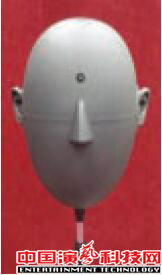
Figure 1 acoustic head model
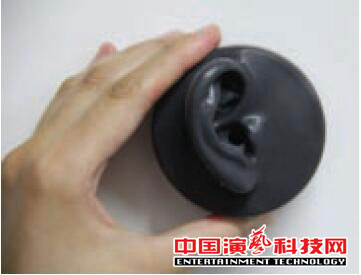
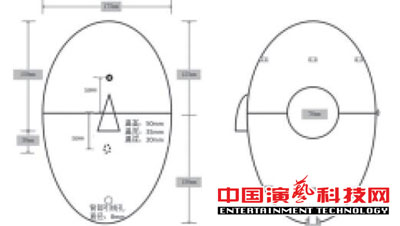 Figure 3 acoustic head mold structure size
Figure 3 acoustic head mold structure size
Recording Evaluation of Live Sound Effect Based on Acoustic Head Model
The recording method based on the acoustic head model refers to the auditory head mold placed in the audience area or stage area to be evaluated, the use of acoustic head mold on the live performance of binaural recording, after the standard listening room with earplugs on the binaural recording Playback, and thus the performance of the scene sound evaluation of the subjective evaluation method. Special attention is required: the position, orientation and height of the acoustic head mold during recording should be consistent with the listener or performer. If the speaker is used for playback, the binaural signal is subjected to crosstalk cancellation, but this will cause the sound field to be distorted and affect the evaluation result. Therefore, it is not recommended to use the speaker playback. In order to remove the acoustic head mode recording and playback of the impact of the electro-acoustic system, the need for two head of the microphone microphone microphone and earphone frequency response.
2.1 Advantages
The use of acoustic head model based on the recording evaluation method, completely solve the on-site evaluation of the time and geographical constraints, listeners do not need to the scene, you can at any time, any region to evaluate, greatly saving the time of the listener And energy, but also save money, to facilitate the evaluation work. In addition, the recording evaluation has complete repeatability, to facilitate the evaluation of the reliability and validity of evaluation.
Perfect sound effect not only to make the audience get the best listening experience, actors and other aspects have to get a higher degree of satisfaction. Therefore, the evaluation of the live sound effect not only to the audience area (voice clarity, sound field reverberation, intimacy, warmth, fullness, sense of sound source width, auditory sense of surround, sound field natural degree, etc.) But also on the stage area (language clarity, sound field natural degree, stage area response timeliness, etc.) to evaluate. In the live performance, the acoustic head mold placed in the stage area for recording, you can stage the sound effects of the district to evaluate. In the same scene, a plurality of acoustic heads are placed in different positions in the stage area and the audience area for multi-point recording, so that the sound effects at different positions in the hall can be compared in the listening room. These are the traditional on-site evaluation methods can not be achieved.
2.2 Problems
As we all know, binaural recordings exist before and after the confusion and head of the image of the problem. At present, there are many ways to a certain extent to improve this distortion, most of the methods are on the binaural recording or HRTF signal processing, increase the difference between before and after the spectrum, enhance the ear effect to distinguish between before and after the sound The But the binaural recording of the signal processing will be to a certain extent, led to the reduction of the sound field distortion, the most critical is to bring changes in the tone, will seriously affect the subjective evaluation results. Another effective way is to join the head of dynamic factors, a better solution to the confusion before and before the head of the problem. However, the dynamic factors of the head can only be added in the virtual environment created using the binaural signal synthesis technique, and the HRTF used for the synthesis needs to be changed in real time according to the head movement of the listener. Binaural recording process is to keep the acoustic head mold fixed, unable to join the dynamic factors, therefore, this improvement method is not applicable to the acoustic head of the live sound effects recording evaluation.
2.3 Improve the method
Human auditory production is a complex process of combining physical, physiological and psychological factors, and to a large extent subject to cognitive impact. For example, to see the announcer in the television in the speech, will naturally be the voice of the announcer in the screen where he is located, only when the eyes closed, will carefully distinguish the sound is actually by the side of the TV Speaker is issued, this is because by cognitive experience, the vocal and the speaker should be consistent with the location of their own. Therefore, if the process of recording evaluation, given the auditors orientation of the audio information, so that the direction of the sound in advance have a certain awareness, it will be easy to solve the confusion before and after the head and the positioning of the problem, Which visual cue is a relatively simple and effective way. Acoustic head mold in addition to get the left and right sides of the information on the binaural channel, as well as before and after the upper and lower information on the two auxiliary channels, through a series of calculations can be obtained in the three-dimensional space within the space. In the recording evaluation, you can use the indicator light or other means to listen to the sound of the audience at this time the position, so that you can greatly reduce the listening and speaking process before and after the confusion and head positioning to bring the real feelings of the recording evaluation process , So that the listener is more attentive to the subjective evaluation work.
Another more direct way is to provide on-site synchronization of video information, including the scene around the environmental information and sound source information, as far as possible to make the recording evaluation of the listeners and on-site evaluation of the same visual information. The subjective experiments show that these synchronous visual information can reduce the confusion and the positioning effect in the head before and after a certain degree of sound image, so that the sound image is very clear and has a more realistic sense of space and telepresence. Therefore, the acoustic environment and sound source conditions of the site to be evaluated can be recorded and recorded in accordance with the position of the acoustic head mode, and the video synchronized with the binaural recording is recorded at the perspective of the acoustic head mode. Referring to the assembly method shown in Fig. 4, the acoustic head mold is vertically fixed above the camera to face the lens direction. In the late recording evaluation, the first listeners to play the scene of environmental information and sound source information of the video, and then sync with the binaural video playback performance, subjective evaluation. Will listeners placed in the virtual performance site, so that the results of recording evaluation closer to the site evaluation, improve the accuracy of recording evaluation.
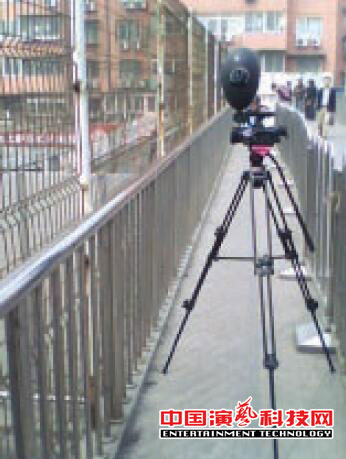
图4 声学头模及录像设备装配方式
节选自《演艺科技》2015年第10期
